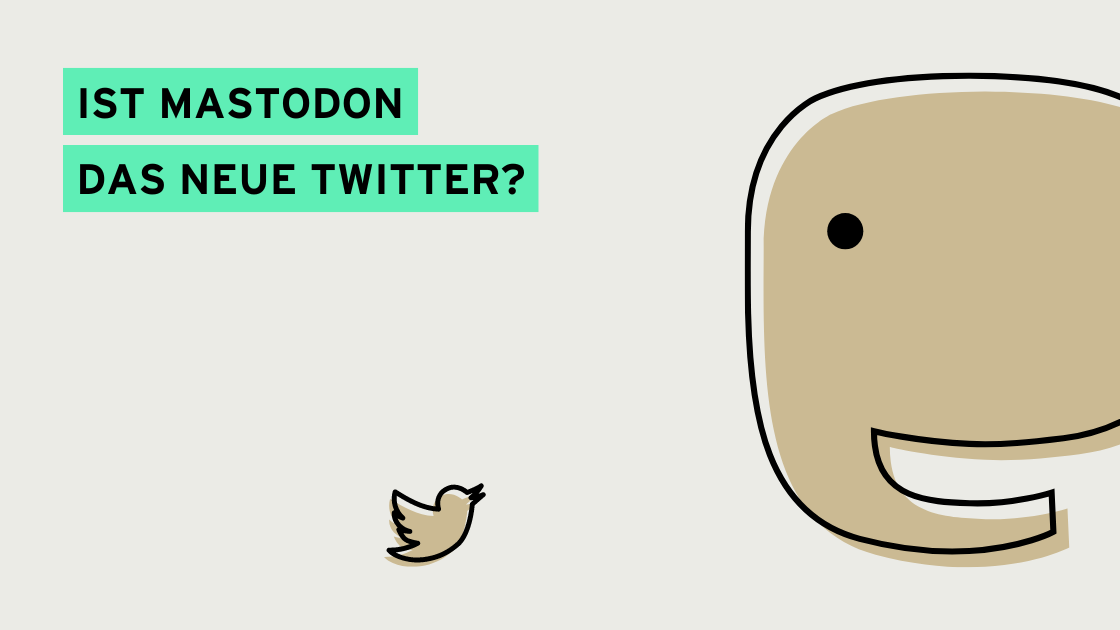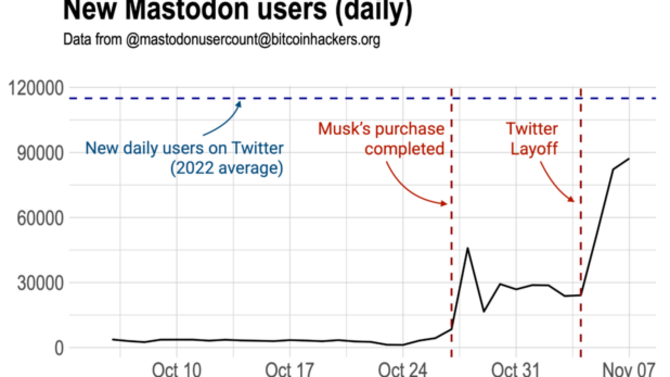Social Media Is Mastodon the new Twitter?

Since Tesla billionaire Elon Musk's 44 billion euro takeover of the short message service Twitter, the social networking world has been in turmoil. Particularly in the political community, there has been a veritable sales movement away from Twitter. One platform in particular stands out as the most promising alternative to Twitter: Mastodon. We took a look at Mastodon: How does the network work, for whom is the move worthwhile and what does it take to become active on Mastodon?
The End of Twitter?
As his first official act, the new Twitter boss dismissed around half of the 7500 employees. The majority of the remaining employees decided to leave Twitter in the following weeks. 4,400 freelancers were also dismissed.
Since Musk's takeover of Twitter, users have feared that the self-declared "free speech absolutist" would turn Twitter into a haven for hate speech, group-based misanthropy and fake news. The fears do not seem unfounded. The mass dismissals have far-reaching consequences: More and more mistakes are occurring, complaints about hate speech, misinformation and offensive tweets have increased by half. The mass dismissals also affected the employees who take care of the algorithms that check all tweets for hate speech, false information or child pornography. Musk also unblocked numerous blocked profiles - including Donald Trump and Jordan B. Peterson. These had previously been blocked for violations of Twitter's policies.
According to estimates, Twitter has already lost more than one million users (as of 3 November), and major advertising partners such as Audi, General Motors and Volkswagen have also temporarily left Twitter.
The winner: an Open Source project?
The current winner of this crash course seems to be the open source project Mastodon. While Mastodon had one million active users on 7 November, it already had two million on 19 November. Many scientists* are switching to Mastodon. And public institutions such as the Federal Press Office, the KfW Bankengruppe and customs are already active on Mastodon.
The hype around Mastodon is justified - even if Twitter will remain an important factor for the time being.
So it's worth taking a closer look at the platform.
Masto… what?
It takes its name from the prehistoric elephants formerly known as mastodons. Tweets are called "toots", posts are "retweeted" and not "liked" and "boosted" and not "shared". Mastodon also differs from commercial platforms like Twitter in its core: instead of profit logic and secret algorithms, Mastodon promises open source and power for all users.
Founded in 2016 by German software developer Eugen Rochko, Mastodon functions as a federated system. Instead of centrally operated servers, as is the case with Facebook or Twitter, Mastodon allows everyone to operate their own server - the so-called instance - with the help of open source software. The owners often finance their instances through donations.
Mastodon is part of the so-called Fediverse. This is a play on words from Federation and Universe and refers to non-commercial social networks that support the ActivityPub protocol. In addition to Mastodon, services such as Peertube (YouTube alternative), Pixelfed (Instagram alternative) and Diaspora (Facebook alternative) are also part of the Fediverse. Users can interact with each other across the Fediverse platforms and share content as long as their instances are discoverable.
How to get started
In order to start with Mastodon, you first have to choose an instance. There is no complete overview of all available instances. However, most servers can be found in server databases. Masto.dir, for example, lists German-language instances that work for the common good. The content orientation of the instance and its moderation rules can be clues for the choice. This is because the operators of the instances are responsible for moderation and each set their own rules.
Of course, Mastodon can also be used on the move. Instead of the official Mastodon app, however, experienced users often recommend the app "Metatext".
Unlike Twitter, there is no global search across the entire platform. You only find people who are active on the same server. To be able to search for people across instances, you need their exact address (i.e. what is the handle on Twitter). Users can decide for themselves whether they want to communicate with users on other instances or block the content of certain servers completely.
Another special feature: independent content is preferred - a quote function is not possible. Furthermore, there is no algorithm on Mastodon that determines the order of posts in the newsfeed - posts are always displayed chronologically.
Mastodon leaves it up to the operator to decide whether advertising is displayed to refinance his expenses. Very few people make use of this, so Mastodon is currently practically free of advertising.
Mastodon: The new Twitter?
Currently, Mastodon has 11,433 instances and 2,439,391 active users as of last month (as of 8 December 2022) - and the number is still rising. This is encouraging, because as an open source and non-profit project, Mastodon is worth supporting, especially for progressive actors. However, the comparison shows that despite Mastodon's enormous growth momentum, Twitter is still the top dog. According to its own data, Twitter has a user base of 238 million active users. A report by NewScientist shows that only a fraction of those who announced they would switch to Mastodon actually left Twitter for good.

Daily growth in Twitter and Mastodon users: Mastodon is growing slower than Twitter, but catching up. Source: Esteban Moro (@estebanmoro@mastodon.social)
Especially for journalists and those who want to follow the news in (almost) real time, Twitter is still indispensable due to its huge user base and fast reactions.
Switching all users to Mastodon would not be feasible at the moment - at least not in one fell swoop. Many instances have already stopped accepting users because the rush is too great. Because Mastodon depends on the commitment of the instance owners, who finance the instances out of their own pockets, the capacities are limited.
How to make the transition?
Even if Mastodon is not the new Twitter and a final move to Mastodon is currently an option for very few private individuals and civil society organisations: the project is worth supporting, the dynamics remain rapid and open source alternatives to internet giants like Twitter are urgently needed.
For starters, it is advisable to set up an account on Mastodon and second-post Twitter content there. There are also so-called cross-posting bots that automatically share content published on Twitter on Mastodon (or vice versa).
Trade unions or similar larger civil society networks can also think bigger: it makes sense for them to operate their own instances. This way, they can enable their members to join Mastodon, gather like-minded people and interact with interested parties.
It doesn't take much to set up a server: a domain, a web server, a mail service (we don't recommend running your own mail server) and possibly additional storage space. Monthly costs start in the mid two-digit range.
Conclusion
The hype around Mastodon is justified - even if Twitter will remain an important factor for the time being. The platform is a relevant project for all those who want to distribute their content while supporting and strengthening non-commercial spaces on the net. Interested? We would be happy to advise you further and support you in setting up your own server.